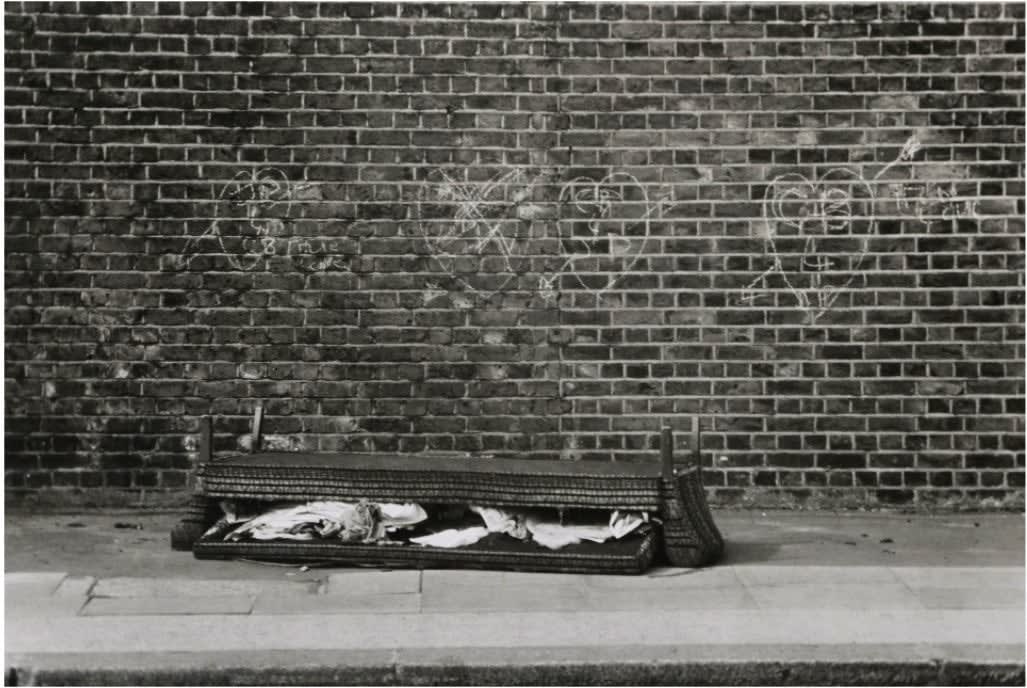Stuart Brisley
Goeorgiana Collection No. 41, 1979-86
Gelatin silver print, in its original frame
Unique
Unique
Image:
40 x 60 cms
15 3/4 x 23 5/8 ins
Framed dimensions:
66 x 86 cms
Framed dimensions: 66.5 x 86 cms
40 x 60 cms
15 3/4 x 23 5/8 ins
Framed dimensions:
66 x 86 cms
Framed dimensions: 66.5 x 86 cms
271640
Provenance
Galerie Giovanna Minelli, ParisExhibitions
"Lieux Communs Figures Singulières", Musée d'Art Moderne de la Ville de Paris in 1992 (label affixed to the back of the frame)Works from the same series are also reproduced in this catalogue, pp. 63-65, and this work, Georgiana Collection No. 41, appears in the list of exhibited works on p. 135.
Literature
Matter of Facts 1988, illustrated p.36."Lieux Communs Figures Singulières", Musée d'Art Moderne de la Ville de Paris, 1992. Works from the series are reproduced in this catalogue, pp. 63-65, and this work, Georgiana Collection No. 41, appears in the list of exhibited works on p. 135.
Brisley created his own imaginary institution, The Georgiana Collection, and between 1979 and 1986 worked with his local community, in this case homeless people sharing the same street where he...
Brisley created his own imaginary institution, The Georgiana Collection, and between 1979 and 1986 worked with his local community, in this case homeless people sharing the same street where he lived. Taking its title from the name of the street in London in which he was living at the time, Brisley conceived a fictitious art institution, the Georgiana Collection, comprising works in various media: photography, performance, video, tape/slide, sound, installation, and sculpture. It was the subject of an exhibition at the Serpentine Gallery, London in 1986.
The street was itself the subject of the collection. Writing about it in 1991, Brisley asserted: “The Street was used as a lavatory, a bedroom, a rubbish tip, a playground, a boudoir, a battleground, an asylum. All this and more washed up and down, in and out of the less inhabited part of the street. In this ocassionaly [sic] glimpsed chaos, peripherally perceived, I picked up a camera and pointed it at things which had somehow or other arrived there. Some of those things were people.”
The works were concerned with notions of private and public territory; they were propositions that sought to comment on the nature of society and the potential – or inability – to enable change.
'Recently Brisley, in a series of performances and an extended text, has concerned himself with ordure and its collection by a character named Rosse Yael Sirb, a character he - the artist narrator - claims to have first met while he was a corporal in charge of stores during national service in West Germany', Sirb is contrasted by another figure, Bertrand Vollieme, collector of junk and detritus.'
The street was itself the subject of the collection. Writing about it in 1991, Brisley asserted: “The Street was used as a lavatory, a bedroom, a rubbish tip, a playground, a boudoir, a battleground, an asylum. All this and more washed up and down, in and out of the less inhabited part of the street. In this ocassionaly [sic] glimpsed chaos, peripherally perceived, I picked up a camera and pointed it at things which had somehow or other arrived there. Some of those things were people.”
The works were concerned with notions of private and public territory; they were propositions that sought to comment on the nature of society and the potential – or inability – to enable change.
'Recently Brisley, in a series of performances and an extended text, has concerned himself with ordure and its collection by a character named Rosse Yael Sirb, a character he - the artist narrator - claims to have first met while he was a corporal in charge of stores during national service in West Germany', Sirb is contrasted by another figure, Bertrand Vollieme, collector of junk and detritus.'



